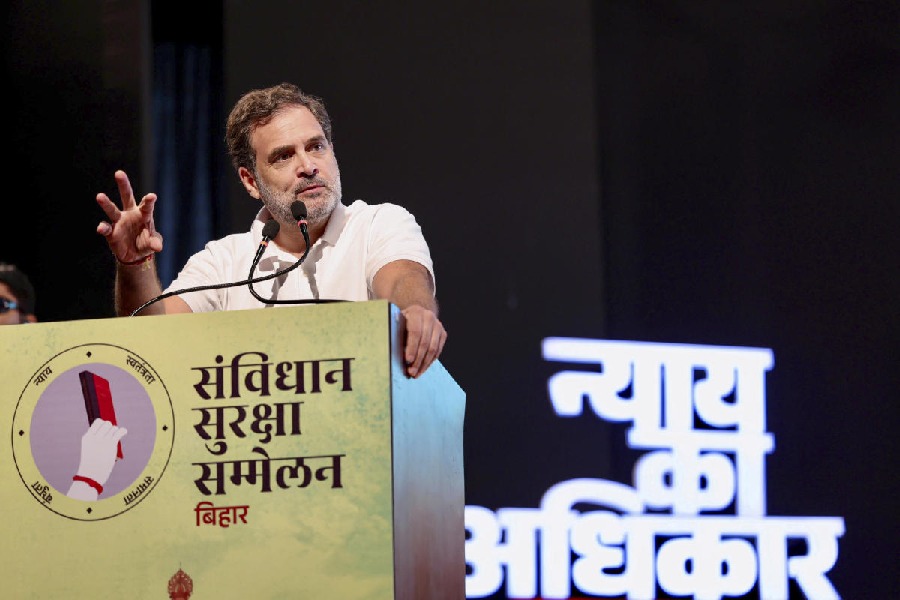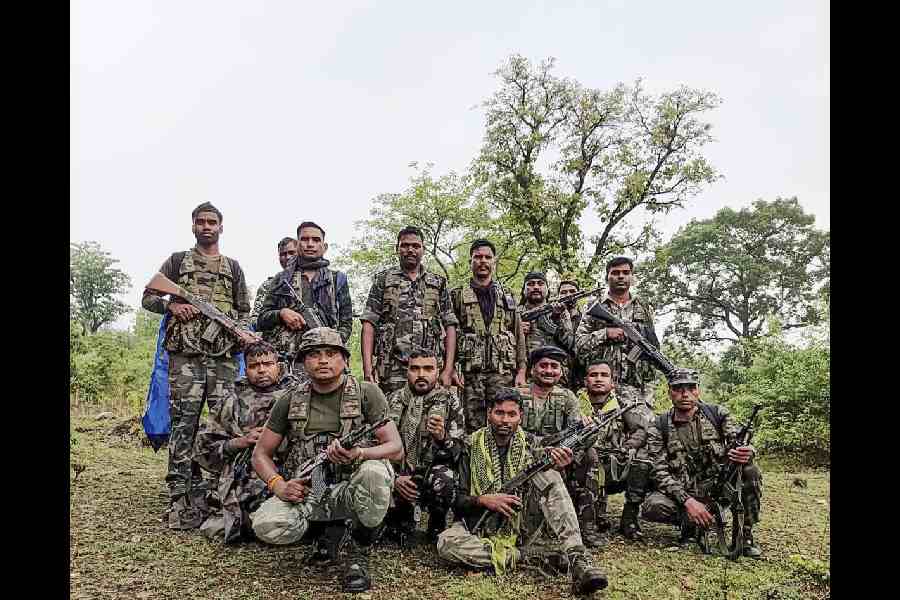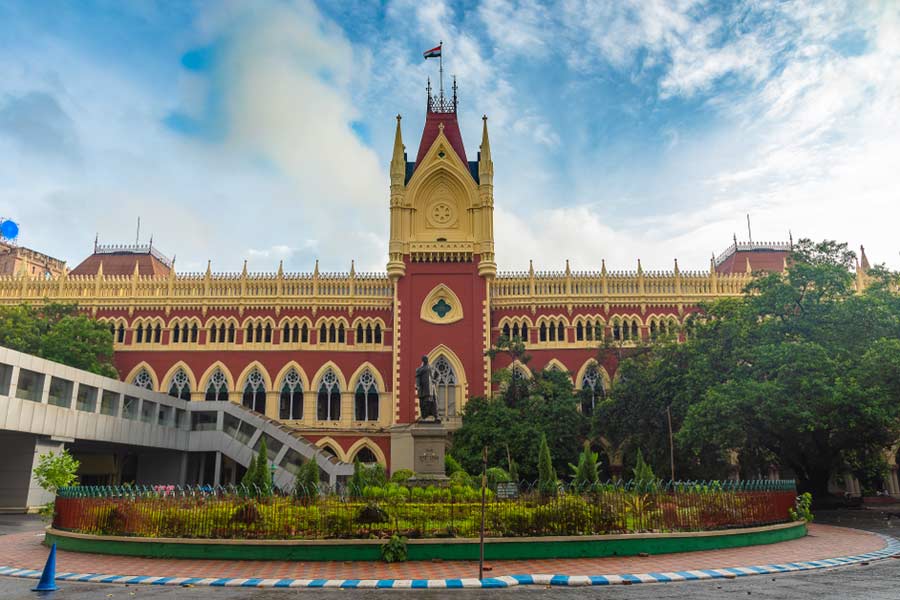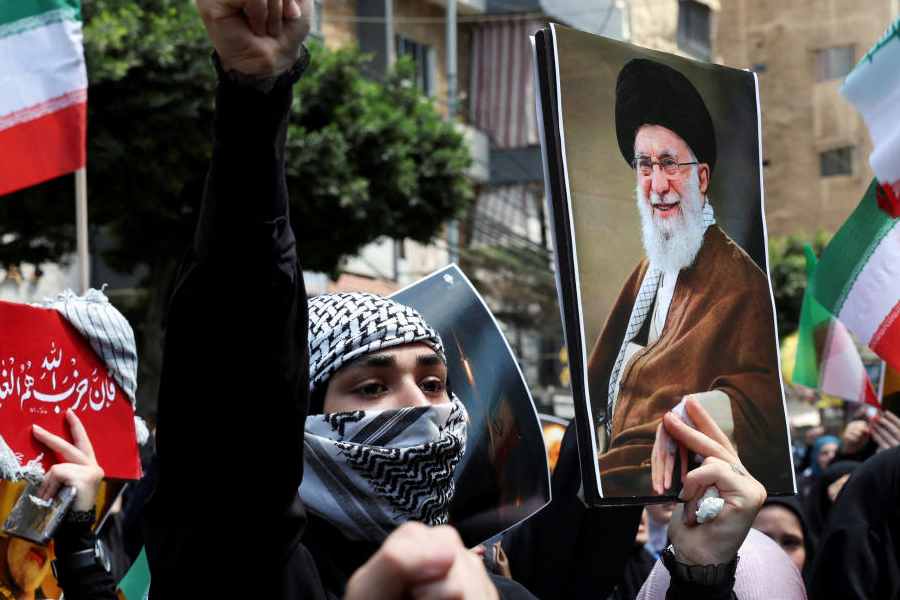 |
New Delhi, May 24: They talked, but they didn’t, or couldn’t, talk enough. They’ve signed off recommending more talks.
The centrally appointed Interlocutor Group on Jammu and Kashmir has, in effect, concluded that there is need for more, and varied, interlocution before solutions could begin to emerge to the nation’s most intractable tangle.
Made public today after months of drip-dose media leaks, the report is a candid confession of running aground 121 pages long.
Its authors — Dileep Padgaonkar, Radha Kumar and M.M. Ansari — have relieved themselves of the scorching Kashmir can, handing it left and right as they retreated from the mire — to a future Constitutional Committee to “re-appraise” the “erosion” of protections under Article 370 and recommend binding corrections, to the Centre and the separatists to resume dialogue, to Pakistan and the administration of Pakistan-occupied Kashmir (PoK) to reincarnate from problem to solution, to political parties and the citizenry at large, this and that side of the LoC, to enter the debate for the making of what they’ve chosen to call the “New Compact”.
The irony that rings loud above the interlocutors’ avid espousal of dialogue is that they themselves were denied it by key stakeholders of the Kashmir problem.
The parties of the Hurriyat, both moderate and extreme, refused to engage with their year-long effort and verily robbed the report of consequence. What the government had tasked the interlocutors with, they have now handed back to the government, unfinished.
It came as no surprise that in the months preceding the report’s publication, Padgaonkar, the group’s lead act, had consistently downplayed expectations. “Let’s not expect miracles; Kashmir is not going to be resolved overnight,” he told The Telegraph a fortnight back. “We are not mandated to offer solutions, we can only show a way forward.”
But little of that “way forward” is likely to come to pass in the foreseeable future. As one Kashmir observer who has been part of Track II initiatives in the past put it: “Did we need an elaborate interlocution exercise, such as it was, to tell us there will likely be a solution if Pakistan were to play ball and the Hurriyat were to shift tack and begin talking of solutions within the existing national framework? This is a classic pass-the-buck exercise; they have handed the government the old malaise disguised as prescription.”
Dovetailed into the requirements of an overarching sub-continental solution are a lesser set of proposals aimed at addressing what the interlocutors fashionably labelled the “competitive victimhood” between the state’s three regions — the Valley, Jammu and Ladakh. Create regional councils and devolve greater financial and administrative powers to Jammu and Ladakh. Review — not rescind — red-rag laws like the Armed Forces Special Powers Act (AFSPA), the Public Safety Act (PSA) and the Disturbed Areas (DA) Act as a salve to the Valley.
And since it has been the flaming arrowhead for decades, administer the Valley additional caresses of poultice: change the “temporary” nature of provisions under Article 370 to “special”; allow them the use of sadr-e-riyasat (President) for governor and wazir-e-azam (Prime Minister) for chief minister, but only in Urdu, mind you; examine if the governor can be picked from a shortlist of three made by the state government, but mind you, again, he/she will hold office only at the pleasure of Rashtrapati Bhavan.
Should the Centre think elements of the “New Compact” worth a shot, here is how some of the obstacles lie arranged:
For a government mired in crises, instituting a Constitutional Committee on Kashmir might mean adding to trouble. Article 370 is as emotional an issue as it is divisive. Strengthening it could play out one way in the Valley, quite another in the rest of the country. The BJP could exploit the issue playing ultra-nationalism, there might be negative political dividends for the UPA in the run-up to the general election. Current parliamentary arithmetic does not permit amendments this way or that. But even on paper, a CC on Article 370 could spell political peril.
The autonomy issue is double-edged and cuts sharp and deep. What’s too little for the Valley is too much for many others. Concessions on nomenclatures like sadr-e-riyasat and wazir-e-azam, however symbolic, could unleash contrary tides beyond the Valley. On the other hand, anything short of concrete autonomy measures could leave even the mainstream parties of the Valley — the National Conference (NC) and the People’s Democratic Party (PDP) — rankled.
There is no mention, much less a prod, of autonomy or self-rule, the empowerment demands formally made by the NC and the PDP respectively. On the other hand, the advice to hand greater powers to Jammu and Ladakh could trigger fresh outcry in the Valley for it will take that as an emaciation exercise. The interlocutors were right to recognise “competitive victimhood” between regions of J&K — the violent fracture of the Amarnath land row of 2008 is deep-set — but contrary aspirations aren’t easy to reconcile.
Resuming dialogue with the Hurriyat is easier advised than achieved. There exists a trust deficit that defies bridging. Their stubborn boycott of the central interlocutors is proof of that. Should they be wooed to the negotiating table at a future date, agreed terms of reference will be tough to fix.
But bringing the Hurriyat around is a far cry; for the moment, it’s very likely even chief minister Omar Abdullah, a UPA ally, and Opposition leader Mehbooba Mufti, a former UPA ally, will turn their noses up in affront of the “New Compact”.











